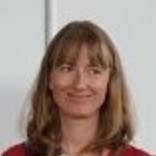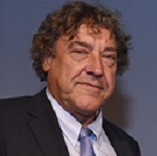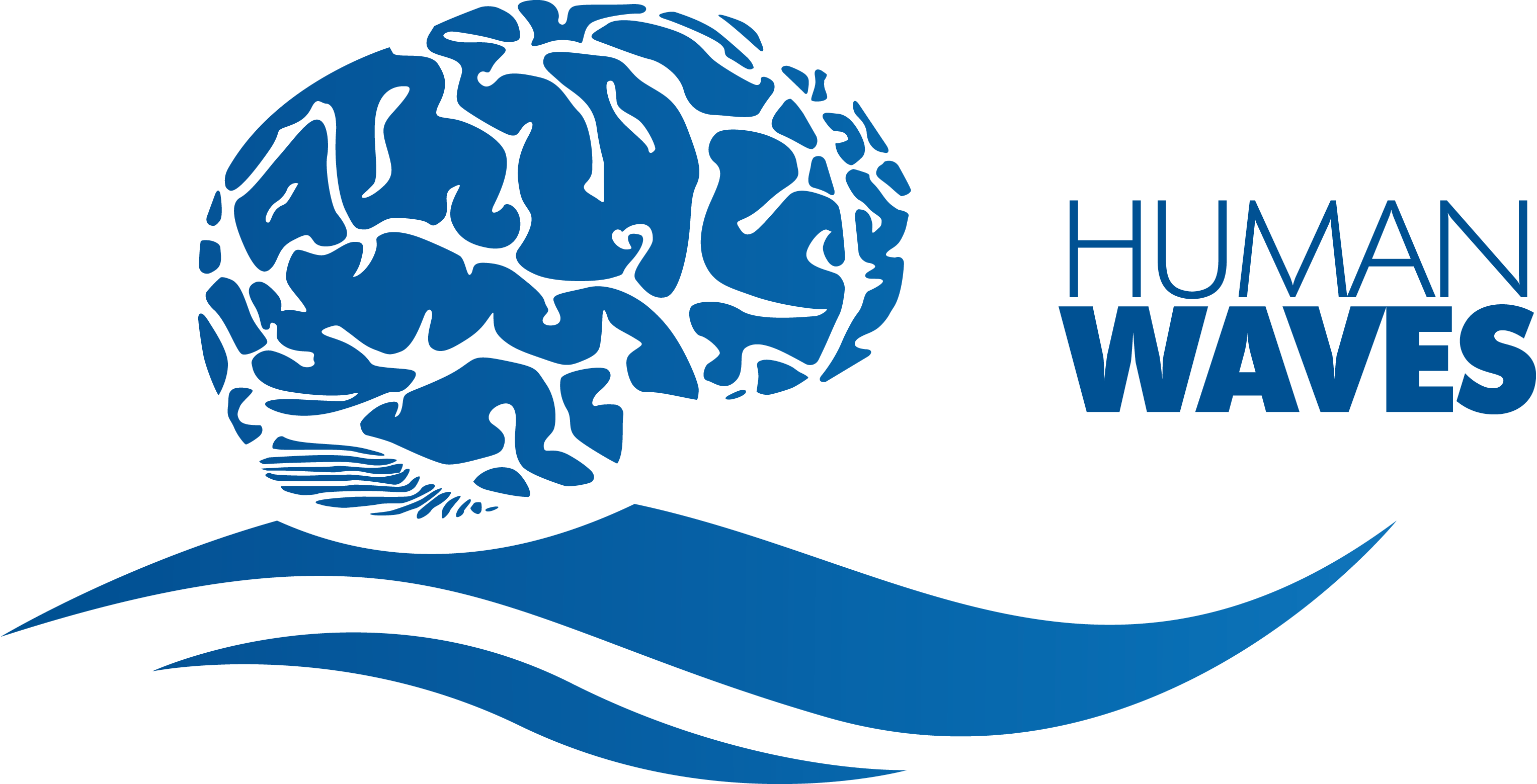
Anne-Marie Clarinval
Membre fondateur et Administratrice déléguée
aclarinval@humanwaves.be
Gsm : +32 (0) 498 91 93 35
Personal Link ×

Anne-Marie ClarinvalMembre fondateur et Administratrice déléguée

Guy Chéron
Membre fondateur et Administrateur délégué
gcheron@ulb.ac.be<p style="text-align: justify">Guy Chéron is a neurophysiologist at the Université Libre de Bruxelles (ULB). After his PhD thesis dedicated to the ageing of the sensory system in human, he was Prof. JE Desmedt’s assistant at the Brain Unit Research (ULB). From 1979 to 1983, he characterized several farfield components of the somatosensory evoked potentials in human, including the spinal N13-P13, which were rapidly used in clinical neurology (e.g. multiple sclerosis, stroke). J.E. Desmedt and G. Chéron were also the first to show the existence of the N30 frontal evoked potential as a specific wave with a traceable evolution during ageing. This wave is now considered as a physiological index of the dopaminergic pathway and commonly used to assess biological severity in Parkinson’s disease. He then developed a number of gating paradigms and recently revealed the oscillatory mechanism involved in cortical processing of somatosensory information, creating perspectives for diagnosis and specific management of neurological and psychiatric disorders that involve abnormal brain rhythms. From 1983 to 1997, G. Chéron and E. Godaux have contributed to the first biological identification of the oculomotor neural integrator (NI) in the nucleus prepositus of the cat. This evidence has been recognized by D. Robinson (see Neuroscience Review, 1989), the proponent in 1968 of the existence of a NI (in the mathematical sense) in the brain. The NI represents a group of neurons that converts vestibular input into eye-position commands. The NI is central to gaze stability, which may be perturbed in a wide range of clinical conditions. G. Chéron has also contributed to the description of the firing behaviour and the pharmacological properties of this network and to the identification of the neural signal provided by the NI to the cerebellar flocculus involved in the eye-head coordination. In particular, G. Chéron and his collaborators were the first to demonstrate the involvement of the NMDA receptors in the neuronal processing of the NI. These results have been extended in several species. This discovery is important for neuroscience because the integrator concept has been recently generalized for all types of movement and also for a mechanism of working memory in cognitive field. The recent work of G. Chéron, since 1997, has focused on the cerebellum. He thus discovered and finely characterized high-frequency oscillation (160 Hz) in Purkinje cell firing in alert mice with abnormalities at several levels along calcium signalling. He then documented this signature of stereotyped cerebellar functioning in different mouse models of human disorders, whether genetic or acquired, such as Angelman syndrome and the fetal alcohol syndrome. Pharmacological modulation of the 160 Hz oscillation with agents acting on GABAergic, glutamatergic and gap junction neurotransmission paves the way for new therapeutic interventions. Based on these basic experiments performed in animals, G. Chéron has also developed several approaches in translational research and integrative neuroscience in human centered on two main themes: motor control and brain oscillations. For example, G. Chéron’s group was the first to demonstrate the neural origin of the kinematic planar covariation rule by studying the very first step of toddlers. Since 2002, in collaboration with the Collège de France (Prof. A. Berthoz), G. Chéron has been the principal investigator of the NeuroCog and NeuroSpat space research programs carried out in the International Space Station aiming at better understanding EEG rhythms and their involvement in perception, attention, memorization, decision and action in different sensori-motor and cognitive processes. This expertise is currently applied by his group on extraction of pertinent EEG signals related to locomotion for brain-computer interface-based rehabilitation of patients with gait disorders such as cerebral palsy, stroke, brain or spinal injury and multiple sclerosis.
G. Chéron was inducted as an Officer of the Order of Leopold II in 1997. He received the Biomechanics Prize (Paris, 1987) and the MAAF Health Prize (Montréal, 2000) to acknowledge his contribution to motor sciences. He has over 150 articles in peer-reviewed journals, wrote a book on Movement Physiology (McGrawHill, 1989). He is a member of the editorial board of the Scientific World Journal and the Open Journal of Neuroscience and expert for 32 international journals. Its citation impact from 1980 to 2010 is 2.237.</p>
Personal Link ×

Guy ChéronMembre fondateur et Administrateur délégué

Bernard Dan
Membre fondateur
Bernard Dan is the Head of the Department of Neurology and Associate Medical Director at the Children’s Hospital in Brussels, Belgium (HUDERF) and Professor of Neurobiology, Neurophysiology and Developmental Neurology at the Free University of Brussels (ULB). He graduated MD magna cum laude in 1992 at the Free University of Brussels and was certified neurologist in 1997, paediatric neurologist in 2000 and rehabilitation specialist in 2004. Part of his training in paediatric neurology and clinical neurophysiology was at Great Ormond Street Hospital in London. He obtained his PhD from ULB in 2002 under the supervision of Prof. Guy Chéron and Prof. Pierre Noël. His thesis was on motor control in cerebral palsy, with an annex thesis on cerebellar neurophysiology in a mouse model of Angelman syndrome. He became Full Professor at the ULB in 2009. Bernard Dan chaired the Belgian Society of Paediatric Neurology from 2006 to 2010. He was the 2010 President of the European Academy of Childhood Disability, is chairman-elect of the scientific committee of this academy and currently chairs the Belgian Academy of Childhood Disability. He was an Executive Committee member of the American National Institute of Health (NIH) ad hoc Commission of the Definition and Classification of Cerebral Palsy and has been a member of the NIH Task Force on Childhood Motor Disorders. He has been a member of the advisory think tank on ADHD and that on autistic spectrum disorders for the Belgian National Institute for Health and Disability Insurance (INAMI) and of the Belgian Conseil Supérieur de la Santé (CSS) commission on early management of children with autism. His clinical and research interests include developmental neuropsychology, neurophysiology and motor control, particularly in cerebral palsy, neurogenetic conditions and ADHD. Bernard Dan was inducted as an Officer of the Order of Leopold II in 2007. He was awarded the Socrates Award of pedagogic excellence (ULB) in 2008 and received the Exceptional Houtman Prize to acknowledge his contribution the benefit of children with disabilities from the hands of the Queen of Belgium in 2009. He is the laureate of the 2012 John Stobo Prichard Award, the highest international distinction in paediatric neurology, which is awarded by the International Child Neurology Association to a young child neurologist who has made a significant contribution to clinical and basic research.</p>
Personal Link ×

Bernard DanMembre fondateur

Paul Verbanck
Membre fondateur
Paul Verbanck is Head of the Psychiatry Department (Brugmann University Hospital), Director of the Laboratory of Medical Psychology and Addictive Behaviours (Psymed, Faculty of Medicine – ULB) and Ordinary Professor (ULB). He is the author of about 200 peer-review full papers. His collaborator, Pierre Oswald, is one of the ten Belgian specialists of adult ADHD.
The special clinical expertises of Dr Paul Verbanck are in the field of addictive behaviours, neuropsychiatry, adult manifestations of ADHD and clinical neurophysiology. The main research programs in which he is involved are the development of naturalistic stimulation paradigms for Event Related Potentials and use of them in the study and diagnosis of infra-clinical syndromes (e.g. borderline depressive disorders and consequences of binge drinking consequences in high-school students), and the study of psychophysiology of addictive behaviours using cognitive sciences models, fMRI and event-related potentials.
Dr Paul Verbanck holds the following executive positions: Secretary of the Medical Ethical Committee (Brugmann University Hospital), executive board of many scientific societies (National and international); expert for the Belgian National Health Council and expert for the National Fund for Scientific Research.
The ethical management is assigned to Dr. Verbanck (Brugman Hospital, ULB), accounting to his status as Medical Doctor and experience with ethical issues management in a clinical environment.
Personal Link ×

Paul VerbanckMembre fondateur
